Air Raid Precautions ARP:
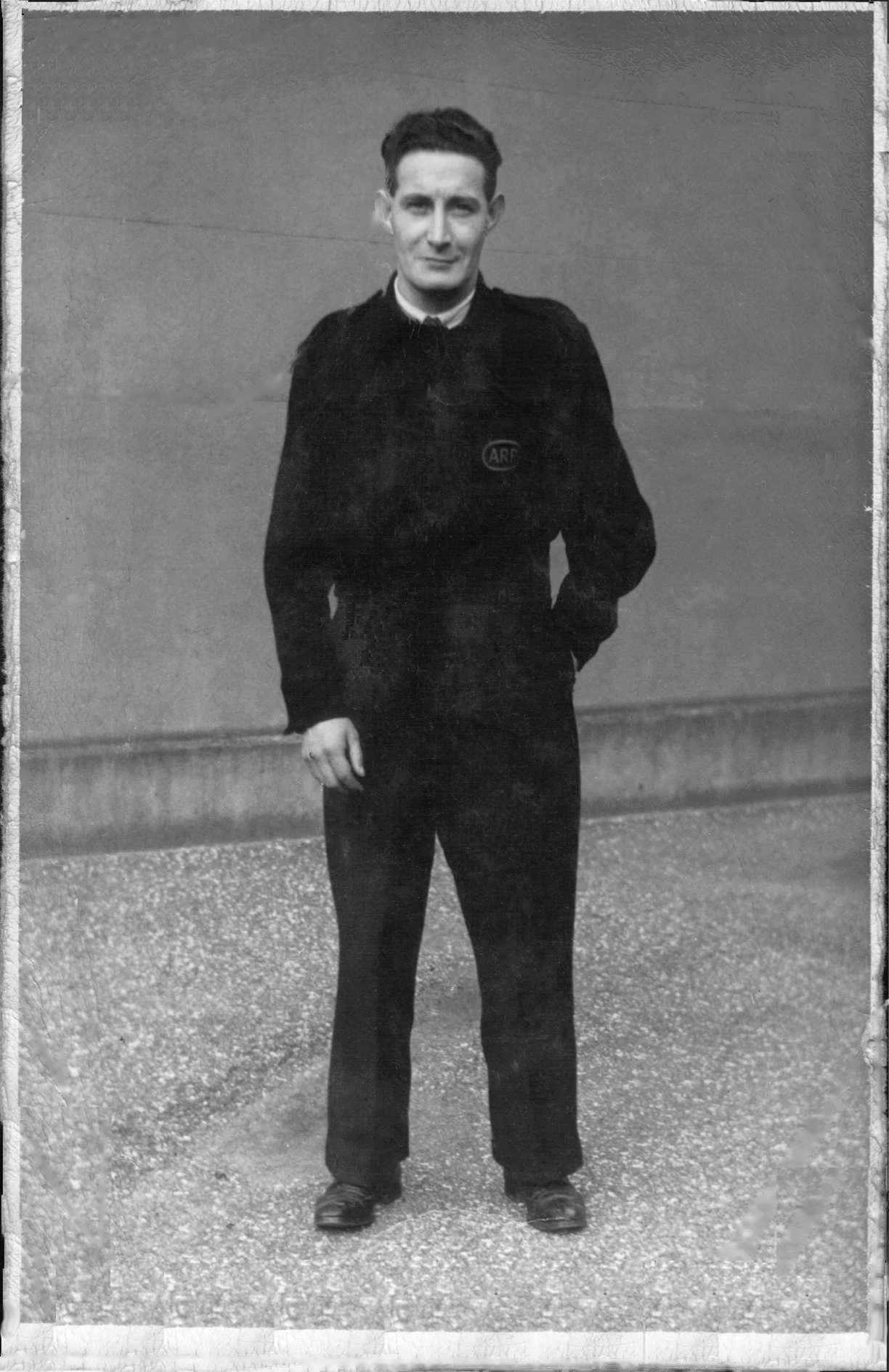
Horace (Uncle Jack) Barnes in ARP uniform
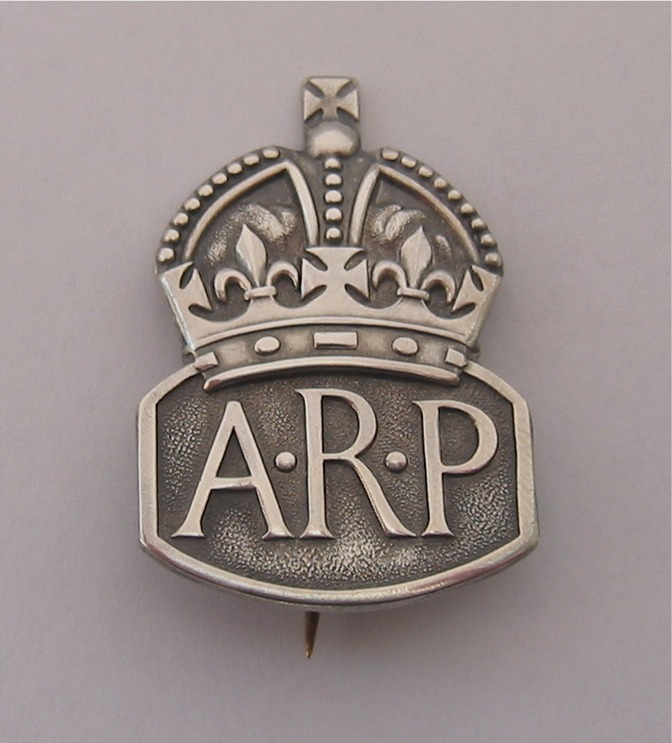
1938 ARP Ladies (as denoted by the pin) badge made by the Royal Mint in .925 silver. It is stamped with the London assay mark (the
leopards head) and carries the date letter 'C'. Rollover image to see
the back of the badge.
.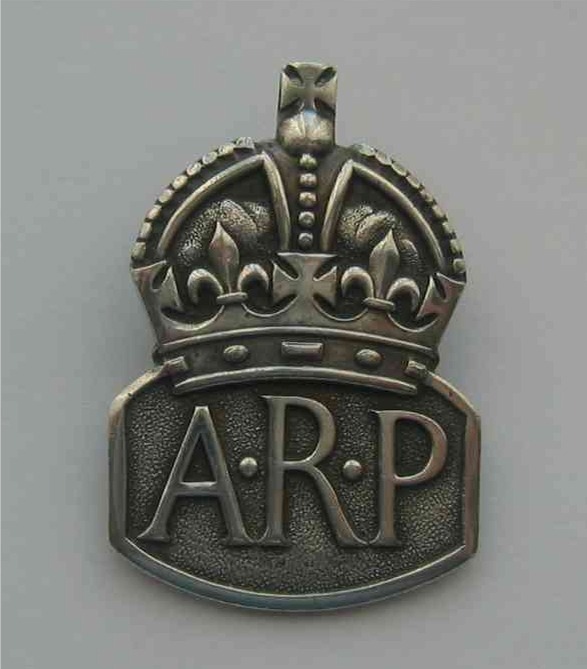
1939 ARP lapel badge of .925 made by the Royal Mint. It has the date letter 'D'. Rollover image to
see the back of the badge.
The ARP badges were issued
after the completion of training and first appeared in 1937 (although
some are hallmarked with the 1936 date code) and produced until 1943.
They were made of .925 silver up until 1940 after which time they were
made of a white metal. From 1941 it was permitted to wear them as a cap
badge when the wearer was in uniform. There were complaints that the badges were too big
and smaller versions were made, some in red and blue enamel. Both versions were initially in silver. The badges
pictured above are from my medal and badge collection. The larger badges measure one and one half inches (38mm) from top to bottom. Soon
after war was declared the ARP service was renamed as "Civil Defence
General Services" and the term ARP was phased out from 1941.
Exactly when Uncle Jack joined the ARP is not known, but as his uniform
(incidentally based on the British Army battledress but with the jacket
and trousers joined together) displays the ARP patch and not the CD
patch it must have been before the war or at the start of the war. Although the
battledress uniform was not introduced until after the ARP service was
renamed as the "Civil Defence General Service" those members that had
joined the ARP were permitted to wear an ARP patch. The CD patch was
worn by those that had joined later.
Aware of the dangers of an attack on
Britain, successive governments had, from 1924 started to make plans for the defence of
the civilian population if the unthinkable should happen - another
European war. London had been bombed between 1916 and 1918 by German
Zeppelins and Gotha bombers. In 103 bombing raids, 1,413 civilians were
killed and 3,407 were injured. A sub-committee of the Committee of
Imperial Defence had been set up in 1924 to deal with Air Raid
Precautions (ARP) and was transferred on the 9th July 1935 to the Home
Office.
In September 1935, the British Prime Minister,
Stanley Baldwin,
published a circular entitled Air Raid Precautions, inviting local authorities
to make plans to protect their people in event of a war. Some towns responded by
arranging the building of public air raid shelters. These shelters were built of
brick with roofs of reinforced concrete. However, some local authorities ignored
the circular (local authorities thought funding should come from government) and in April 1937 the government decided to create an
Air Raid
Wardens' Service and in January 1938 the ARP Act came into force compelling
local authorities to create Air Raid Precaution schemes - central
government contributing between 60 - 75% of the costs. During the year
the ARP service recruited around 200,000
volunteers.
In September 1938 (the Munich Crisis) the British government began to fear a war with
Nazi Germany
and Neville
Chamberlain
ordered that Air Raid Precautions (ARP) volunteers to be mobilized. Cellars and
basements were requisitioned for air raid shelters and trenches were dug in the
parks of large towns. The government also ordered the flying of
barrage balloons
over London.
In November 1938, Chamberlain placed Sir
John Anderson
in charge of the ARP. He immediately commissioned the engineer, William
Patterson, to design a small and cheap shelter that could be erected in people's
gardens. Within a few months nearly one and a half million of these
Anderson
Shelters were distributed to people living in areas expected to be bombed by
the Luftwaffe.
Made from six curved sheets bolted together at the top, with steel plates at
either end, and measuring 6ft 6in by 4ft 6in (1.95m by 1.35m) the shelter could
accommodate six people. These shelters were half buried in the ground with earth
heaped on top. The entrance was protected by a steel shield and an earthen blast
wall. Anderson shelters were given free to poor people. Men who earned more than £5 a
week could buy one for £7. Soon after the outbreak of the
Second World War in
September 1939, over 2 million families had shelters in their garden. By the
time of the Blitz
this had risen to two and a quarter million.
During World War Two Britain was served by 1.9
million wardens (including boys and girls between 15 and 18). Their work was essential and often dangerous; they
provided help following bombing raids, rescuing people and looking after
them until the emergency services arrived and they would demolish buildings
rendered unsafe by bombing. They enforced the night-time 'black-out' and
supervised air-raid shelters. Over 7, 000 Civil Defence volunteers gave
their lives during World War Two. As a result of the heroic actions
performed by the ARP/CD volunteers that the King instituted a new medal,
the George Cross for bravery.
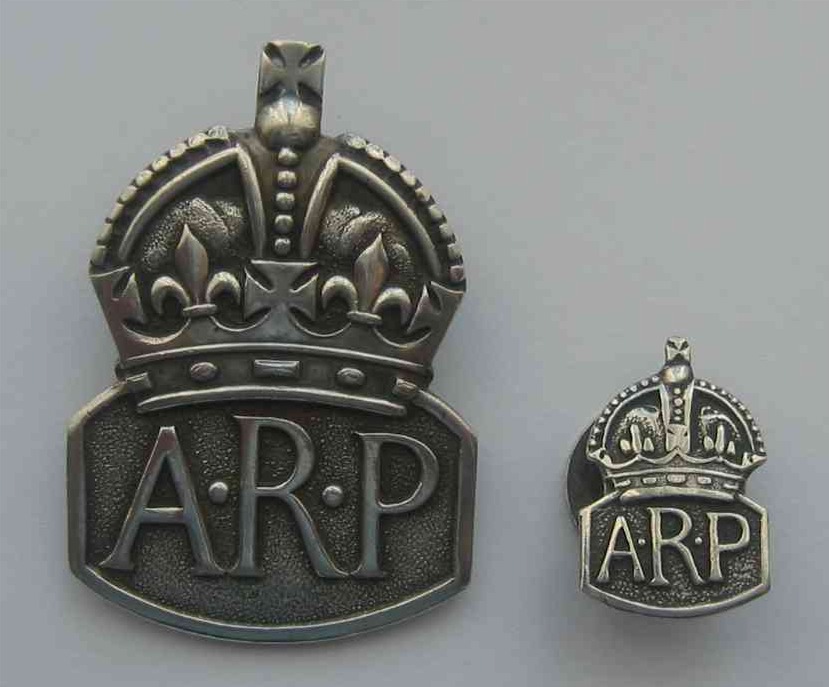
1939 hallmarked ARP lapel badge shown with later, much smaller non-silver lapel badge.
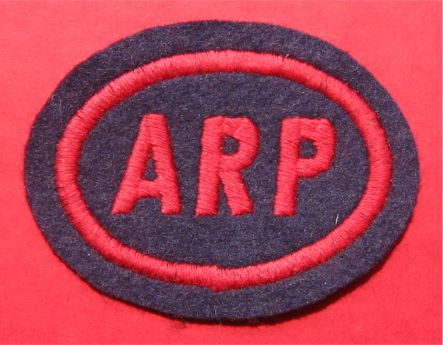
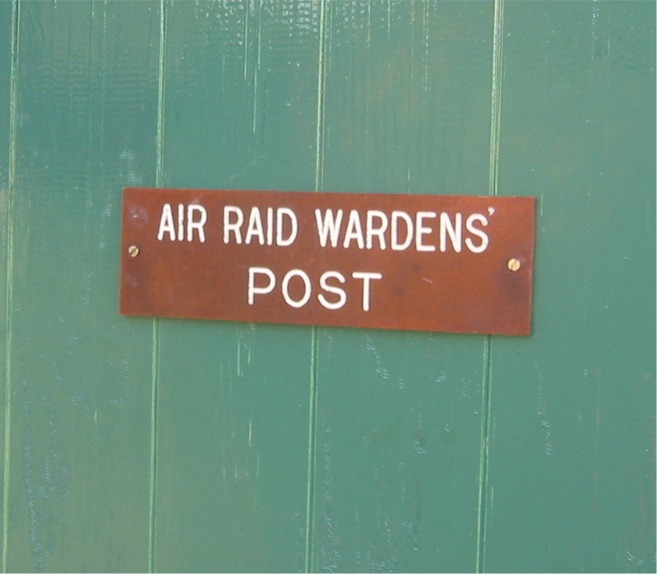
Original Bakelite ARP Wardens' Post sign
From my own collection.
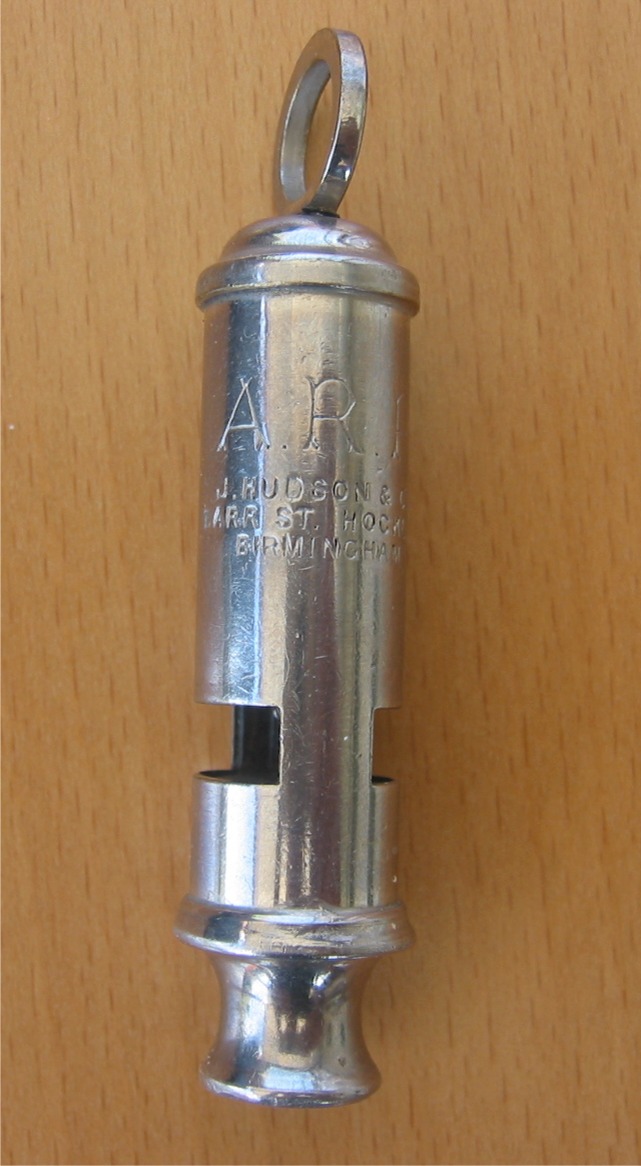
Today, voluntary organisations such as the British Red Cross, the Salvation Army, Age Concern and many, many others provide the services previously provided by the government sponsored Civil Defence organisations.
ARP Whistle by J Hudson of Birmingham
From my own collection
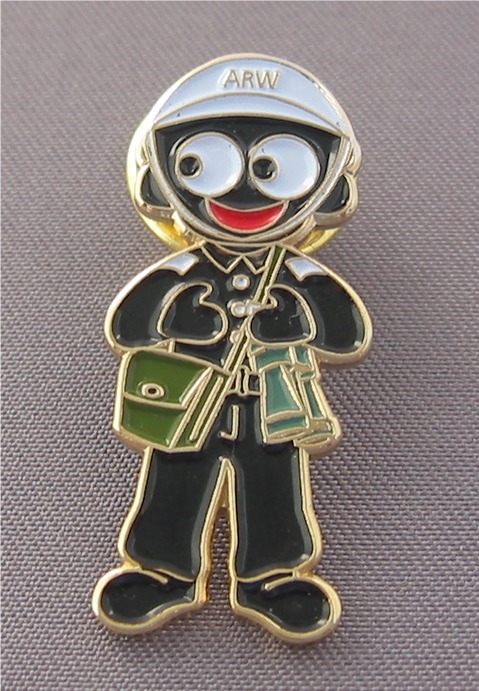
Robinson's Jam Golly "ARW" Badge 1998
From my own collection.